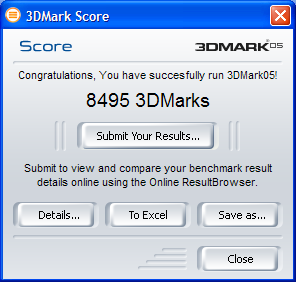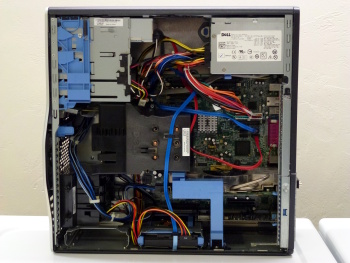First post, by maximus
- Rank
- Member
My office recently scrapped a whole fleet of Pentium 4-era machines. I was allowed my pick of the hardware before the recyclers arrived, and one of the things I saved was this Dell Precision 380 workstation.
It came with a Pentium 4 630 3.0 GHz, 1GB DDR2-667 RAM, Quadro NVS285, Sound Blaster Live! 24-bit, 375 watt power supply, and no hard drive. The original configuration wasn't too exciting, but the system presented an interesting opportunity. I like to put together machines that represent the last and best of some generation of hardware, and this one had the potential to fill some important gaps in my collection: specifically, I wanted to try out the best pre-Core 2 Duo Intel processor and the best pre-DirectX 10 Nvidia GPU.
So, I installed some upgrades and pushed this old machine to its limits. Current specs:
Pentium 4 670 3.8 GHz
2GB DDR2-667 RAM (4x512MB)
GeForce 7900 GTX
Sound Blaster Live! 24-bit (SB0410)
Western Digital 320GB SATA HDD
525 watt Dell PSU (N525E-00)
Vitals:


Full battery of tests, all done at 1024x768x32 with Windows XP SP3 and Forceware 175.19:
3DMark2000

(had to run in Windows 98 compatibility mode; score seemed a little low)
3DMark2001 SE

3DMark03

3DMark05

3DMark06

Doom 3 timedemo

(much slower than I expected; still investigating)
F.E.A.R. timedemo

So far I've been playing Quake 4, Call of Duty 2, Oblivion, and Far Cry, and they all run nicely. I was even able to play Crysis at a mix of medium and high settings. I believe this system is CPU limited because I can often turn on antialiasing without seeing much of a performance hit.

